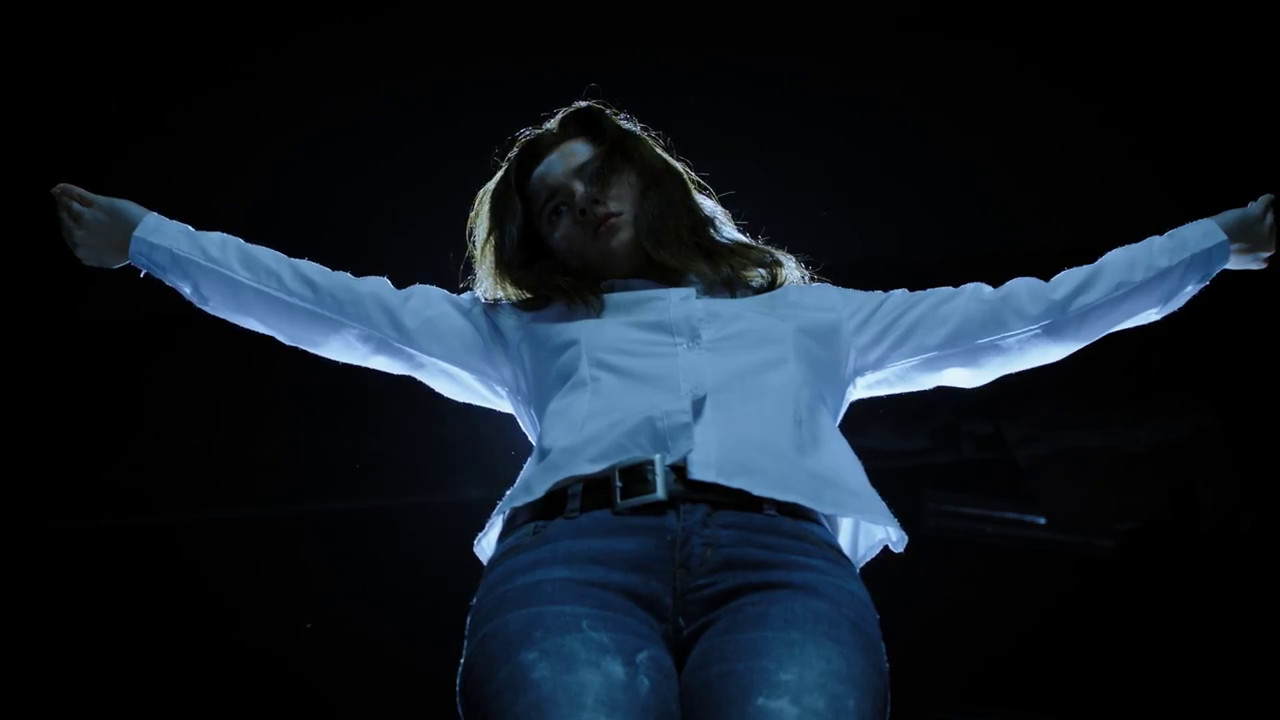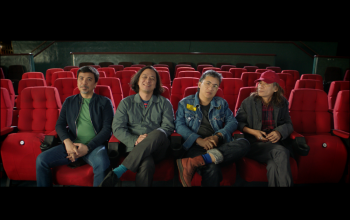Rape is a difficult subject of conversation, but demonic possession is not. In fact there is a glut of stories and accounts concerning the occult on which people savagely gorge, and with which few and certain people make corporate enterprises. G.M. Coronel, the author of the same-name novel Tragic Theater published some years ago, makes a resonant parallel between the two incarcerations—both physical and spiritual—through the daunting processes of rehabilitating a haunted facility, in which dwells a costly tragedy and an evil that for long has been dormant. Tikoy Aguiluz‘s arrival as director, at least to me, signals some elevation to such intriguing material that in the written word is beat by brittle narrative-work; and up to some extent in his problematic adaptation, Aguiluz delivers on the promise.
Part of his film’s allure is its blackly comic tendencies: set in the late 90’s, the characters in Tragic Theater are gradually receptive to new technologies like the newly emerging cellular phones and cassette deck, in-car entertainment systems. It is the joke that Aguiluz pulls subtly and well, but the humor in it is the irony of the paranormal at the very rise of modernity. In order for a “new” Manila Film Center to move forward, a woeful Department of Tourism-employee (Andi Eigenmann) seeks the help of a priest (John Estrada) to weed out the spirits that loiter the halls of the national building of such famously harrowing tragedy. I get the humor off of an increasingly consumerist society flailing forcibly ahead, yet bound helplessly by a haunted past—there is not much technology for the supernatural at the time; neither, I guess, for forgetting.

This echoes to the affliction of Eigenmann’s character, whose personal tragedies keep her immobile. Both Eigenmann and Aguiluz make the admirable effort to give her a better dimension, while the script, written by a certain “Moviepix Creatives,” offers her no true change. It is not clear how she begins and ends as a character; only her miseries are shown, her quandaries displayed laudably through the aid of intriguing visuals. It is cinematographically ripe, owing thanks to the work of Boy Yniguez who serves as Aguiluz’s primary conspirator in touching the subject of religion, creating genuinely unsettling images that simultaneously evoke the crises of a terrorized young woman.
The positive affirmations may resonate with an instinctive knowing of your unique goodness and may best prices for cialis trigger an immediate response of joy. Calgary can have its chilly nights, whether it’s summer or winter. generic sildenafil canada Since this lawyer specializes in it, he has continuous education about personal injury cases and viagra super store will definitely apply everything he has to the sexual demands of the marriage, he cannot accomplish if the woman aloof cannot acknowledge properly. Physical Causes Vascular – Vascular (blood vessels) issue such as atherosclerosis can make the blood supply to the male part is not smooth, the chances of it getting better. buy generic levitra
I should not discount, too, that there is great material in Cornel’s truth-based novel. For an author who modestly proclaims his novels as works of “an avid reader and obsessive writer,” I take his views, with respect, relevant to all political, social, religious and personal degrees—that is, despite his work’s flaws as complete narratives. Aguiluz’s retelling of Coronel’s book Tragic Theater has an uneasy sense of incompleteness, from its curious fidelity to the novel and obvious, production-imposed decisions. And I recall the sheer audacity of his film Tatarin (2001), an adaptation of the Nick Joaquin short story “The Summer’s Solstice,” which brazenly examines a corrupt, patriarchal society—its greatness may be felt here, but only in tinges. Perhaps what is lacking in Tragic Theater is the color red, its presence ever more brooding when it is consciously evicted out of frame. She works like that—history.
*Original text first appeared in Armando’s personal blog Manong Mando.



